Ajvar is a delicious condiment from the Balkans, arising out of the need to preserve the bountiful red pepper harvest. This red pepper dip or spread is fresher than red pepper paste, and is delicious in sauces or even on toast.
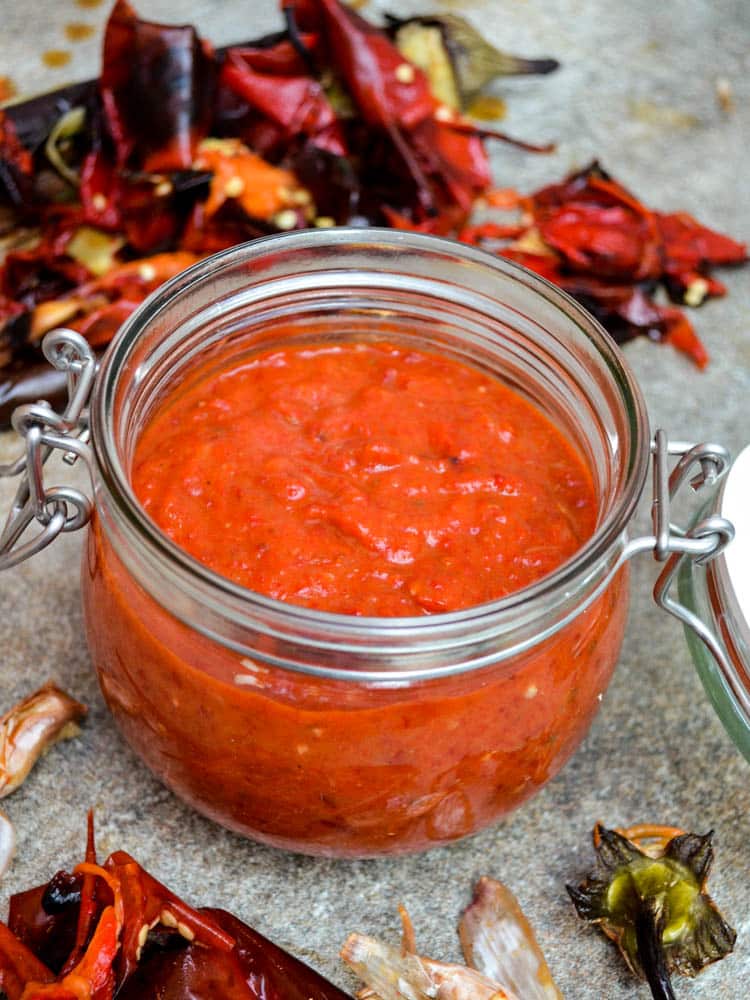
The word ajvar supposedly comes from Turkish havyar, meaning caviar.
But although widespread also in Turkey, the dish is actually from the Balkans, its name and distribution perhaps a testament to the sharing of food and culture across the empire during Ottoman times.
What is ajvar?
Ajvar is a preserved condiment based on red peppers. Red peppers are roasted, then mashed (minced or finely chopped) and preserved in glass jars.
There are many variations on ajvar, both generally and locally. The peppers may be mild or hot, and Some may add other vegetables, notably aubergines.
Green versions also exist, using green peppers flavoured with oregano.
Some “modern”, industrially produced varieties mince the peppers first, then fry them in oil. This is easier, but the result is nowhere near the same.
All the more reason to make your own!
An important conservation method
Traditionally, ajvar is made in large quantities in autumn, when the peppers are at their best. Facing the prospect of a long winter without fresh peppers (or indeed fresh vegetables at all), this was a brilliant way of preserving the bountiful harvest until the final jar was opened at some point during the winter.
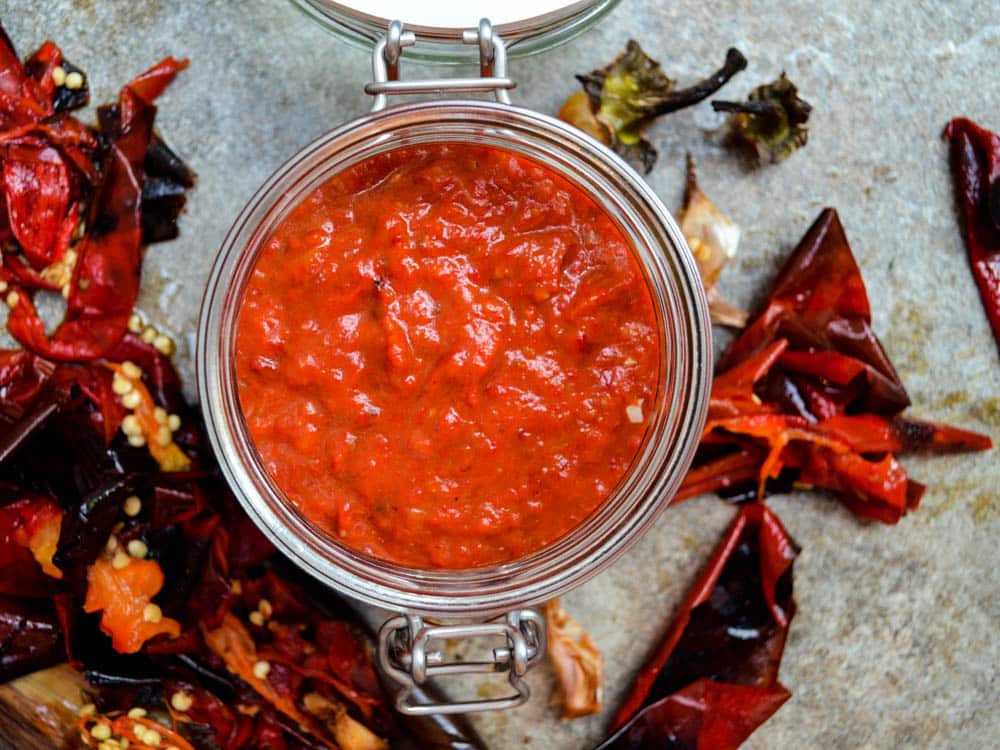
Because I refuse to believe that any jars would last until spring. It is simply too good to keep locked away.
Preparing ajvar to last the winter as the Serbian housewives used to do is a time consuming activity few of us can fit into the requirements of our modern day lives.
However, in smaller quantities it is hardly time consuming at all. Especially if you’re lucky with your peppers and they peel easily (not all peppers come equal here).
But even if they don’t I wouldn’t worry too much – there’s something meditative about peeling a little batch of peppers. And if you couldn’t care less about meditating activities, rest assured it is still neither complicated nor takes very long.
How to use ajvar
Ajvar is incredibly versatile. I use it mostly as a spread at breakfast, on a fresh piece of bread or toast, perhaps with a little cheese and a scattering of rocket leaves.
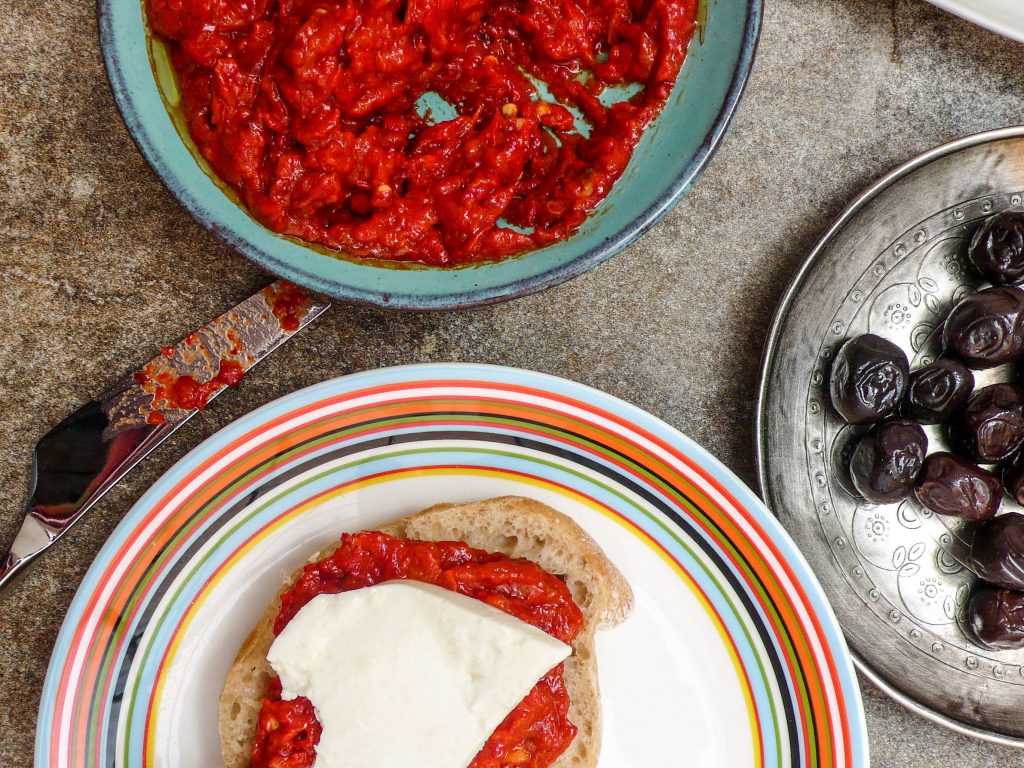
It is also delicious added to tomato sauces or alongside red meat.
The recipe yields a small-ish jar, approximately 250-300 ml.
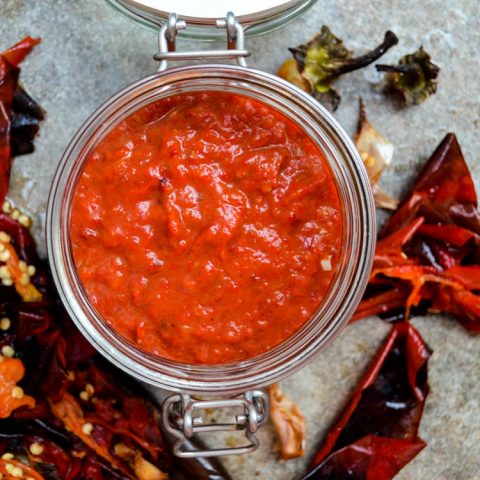
Ajvar (Balkan condiment)
Ingredients
- 600 g red romano peppers, (c. 5 regular sized) or equivalent regular red bell peppers
- 200 g aubergine (eggplant), (c. 1 small/medium)
- 2 garlic clove
- 1 tsp sugar
- 1 Tbsp lemon juice
- 2 Tbsp extra virgin olive oil
- salt and pepper
How I make it
- Set the oven to
250 °C.
- Spread peppers, aubergine and garlic cloves (skin on) on a baking sheet. Roast until the peppers and aubergine hva collapsed and are black and blistered on the outside, 30-40 minutes for the garlic cloves and peppers (longer if using bell peppers) and up to an hour for the aubergine. Turn at least once during roasting.
- Put the peppers in a bowl and cover with film or a tight lid. Once cool enough to handle, remove the skin, core and seeds from the peppers and scoop out the flesh from the aubergine and garlic cloves. Slice the aubergine a few times crosswise to avoid long, stringy bits.
- Mix peppers, aubergine and garlic with the remaining ingredients with a stick blender or kitchen machine until the mixture has a texture you like; I prefer mine chunky. Season with salt and pepper and, if required, more lemon juice or sugar. The ajvar will keep for a few days in the fridge if kept in a clean and tightly sealed container; covering with a little olive oil will extend its life further.



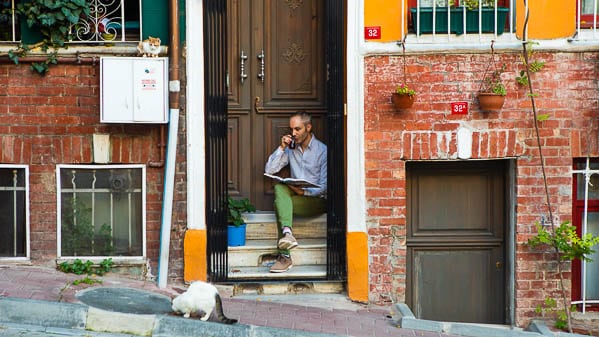
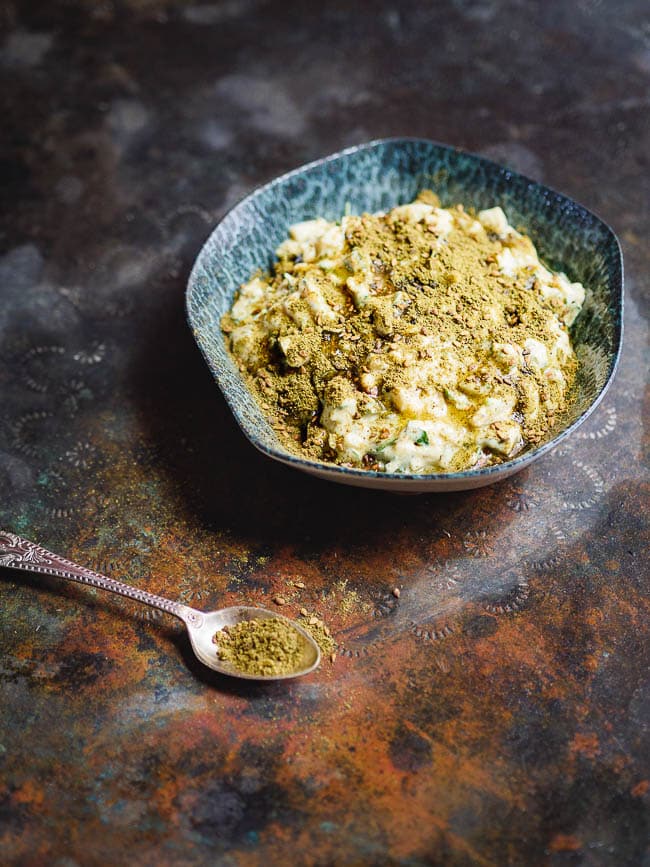
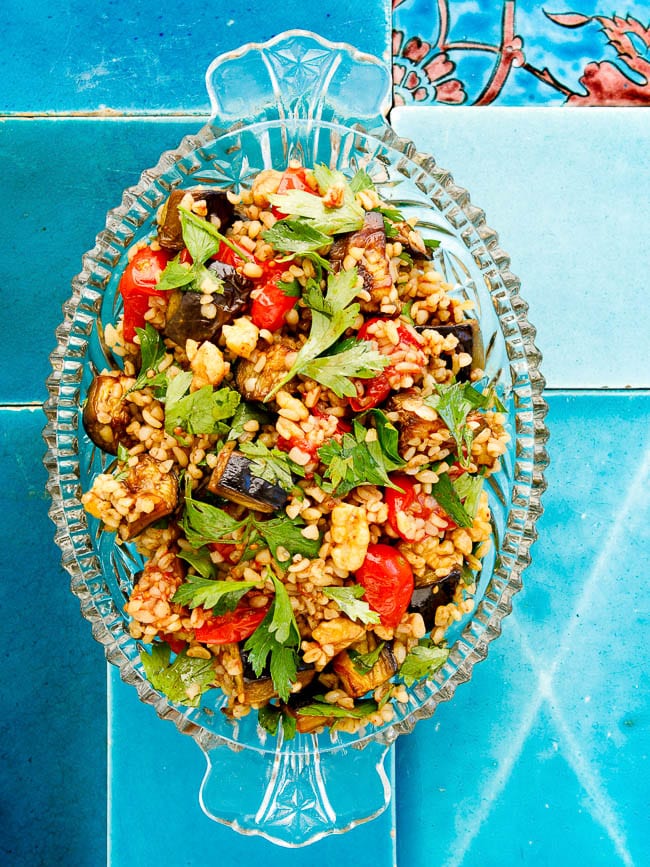
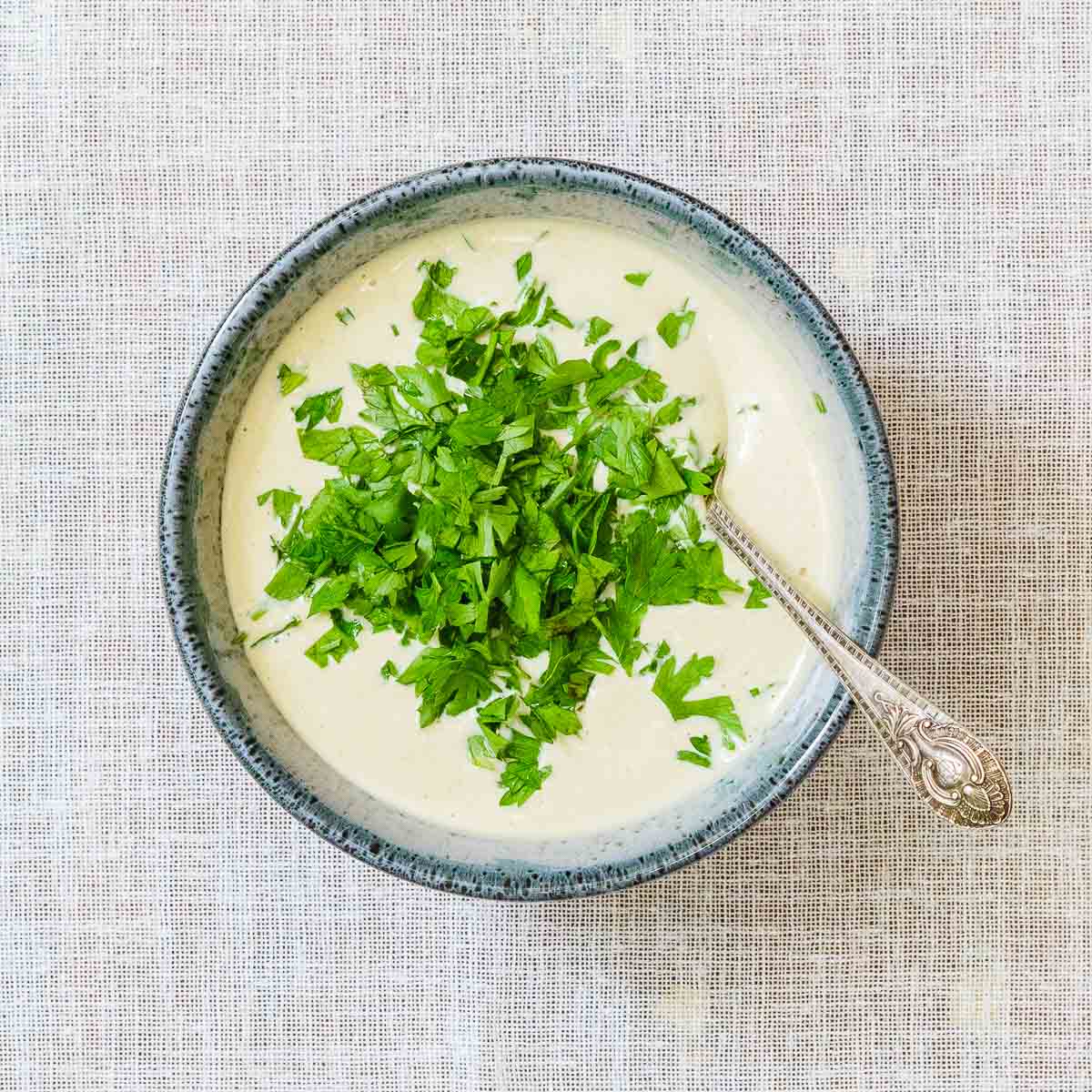
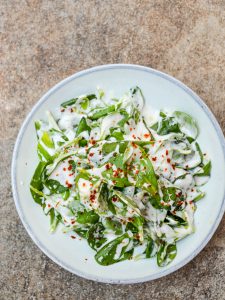
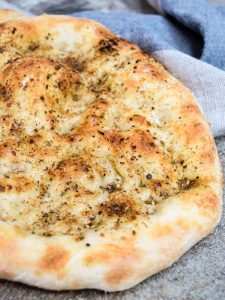
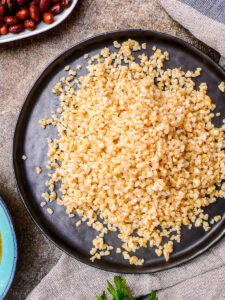
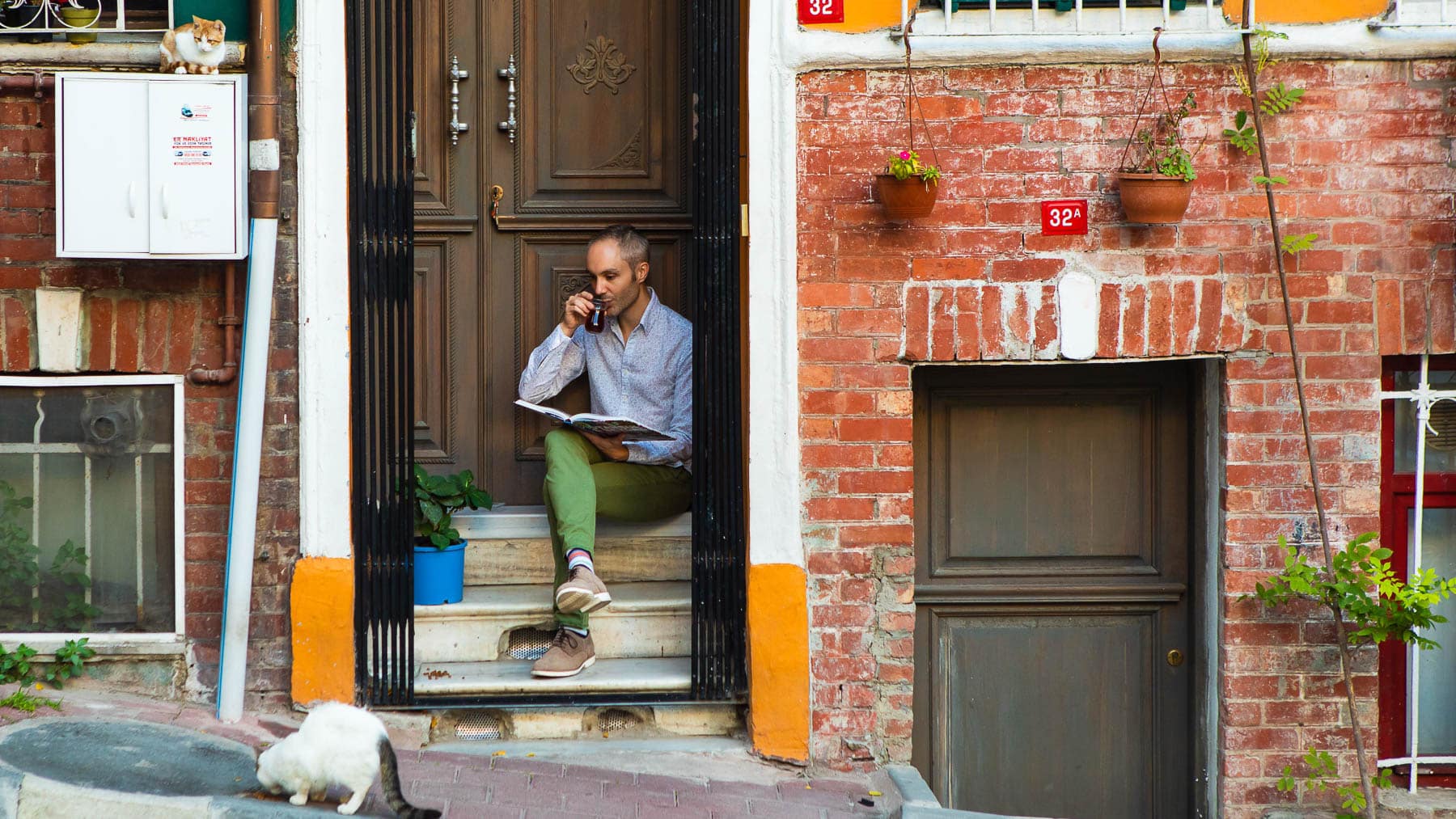



One Response
Hi! I have a question, how many mililiters of ajvar you obtain in your recipe? That jar looks like 350 ml. Thanks!